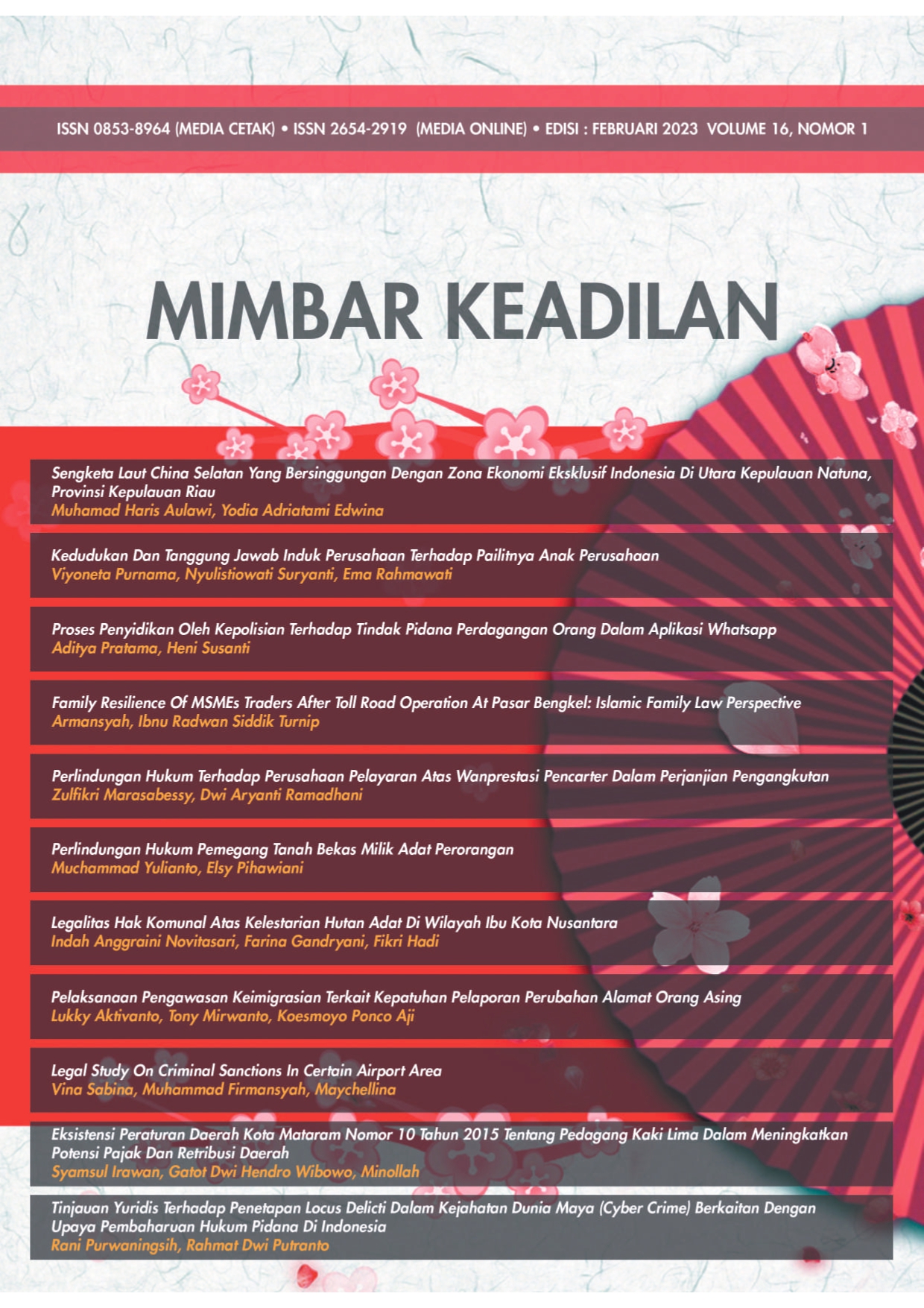Kedudukan dan Tanggung Jawab Induk Perusahaan Terhadap Pailitnya Anak Perusahaan
DOI:
https://doi.org/10.30996/mk.v16i1.6980Keywords:
Bankruptcy, Holding Company, Piercing Corporate VeilAbstract
This research was conducted to explain the position of the holding company as a shareholder and creditor of a bankrupt subsidiary company in terms of Company Law and Bankruptcy and Postponement of Debt Settlement Obligation Law, furthermore, to explain the holding company’s responsibilities for the bankruptcy of the subsidiaries company which are bound by an obligation agreement to only sell the product of the subsidiary company to the holding company in terms of Company Law. This research method is carried out with normative juridical and descriptive-analytical research specifications that describe the practice of Limited Liability and/or Bankruptcy which will be analyzed based on relevant rules such as regulation, theory, and legal principles that are in accordance with the object of the problem, along with that this research was conducted by field research by interview a curator. Then, research specifications with analytical descriptive that describe data on the Company’s practices and/or bankruptcy which are then analyzed based on relevant rules that are in accordance with the object of the problem. The data analysis method is carried out in a qualitative juridical way that describes das sein on the company and/or bankruptcy and analyzes the data based on legal aspects or das sollen without using a diagram. The result of this research shows that when the bankruptcy happened in the subsidiary company, the position of the holding company as creditor and shareholder is different, therefore that position cannot be equaled at the time of payment, the shareholder must wait for the bill paid for the entire creditors are done. If there is still a remaining company asset, the shareholders are entitled to receive their shares. If the holding company through a loan agreement with a subsidiary company contains a clause that exploits the subsidiary company for the benefit of the holding company with bad faith, then the agreement must be null and void because it does not meet the legal requirements of the agreement objectively. As the consequence of the agreement, caused the subsidiary company to fall bankrupt, there has been an indication of piercing the corporate veil so that the position of the holding company as the shareholder and creditor of the subsidiary company, is not entitled to obtain the return of the debt and shares, however, the holding company must be responsible for the losses it incurred
Downloads
Downloads
Published
Issue
Section
License
Authors who publish with Mimbar Keadilan agree to the following terms:
- Authors transfer the copyright and grant the journal right of first publication with the work simultaneously licensed under a Creative Commons Attribution-ShareAlike 4.0 International License.. that allows others to share the work with an acknowledgement of the work's authorship and initial publication in this journal.
- Authors are able to enter into separate, additional contractual arrangements for the non-exclusive distribution of the journal's published version of the work (e.g., post it to an institutional repository or publish it in a book), with an acknowledgement of its initial publication in this journal.
- Authors are permitted and encouraged to post their work online (e.g., in institutional repositories or on their website) prior to and during the submission process, as it can lead to productive exchanges, as well as earlier and greater citation of published work (See The Effect of Open Access)














